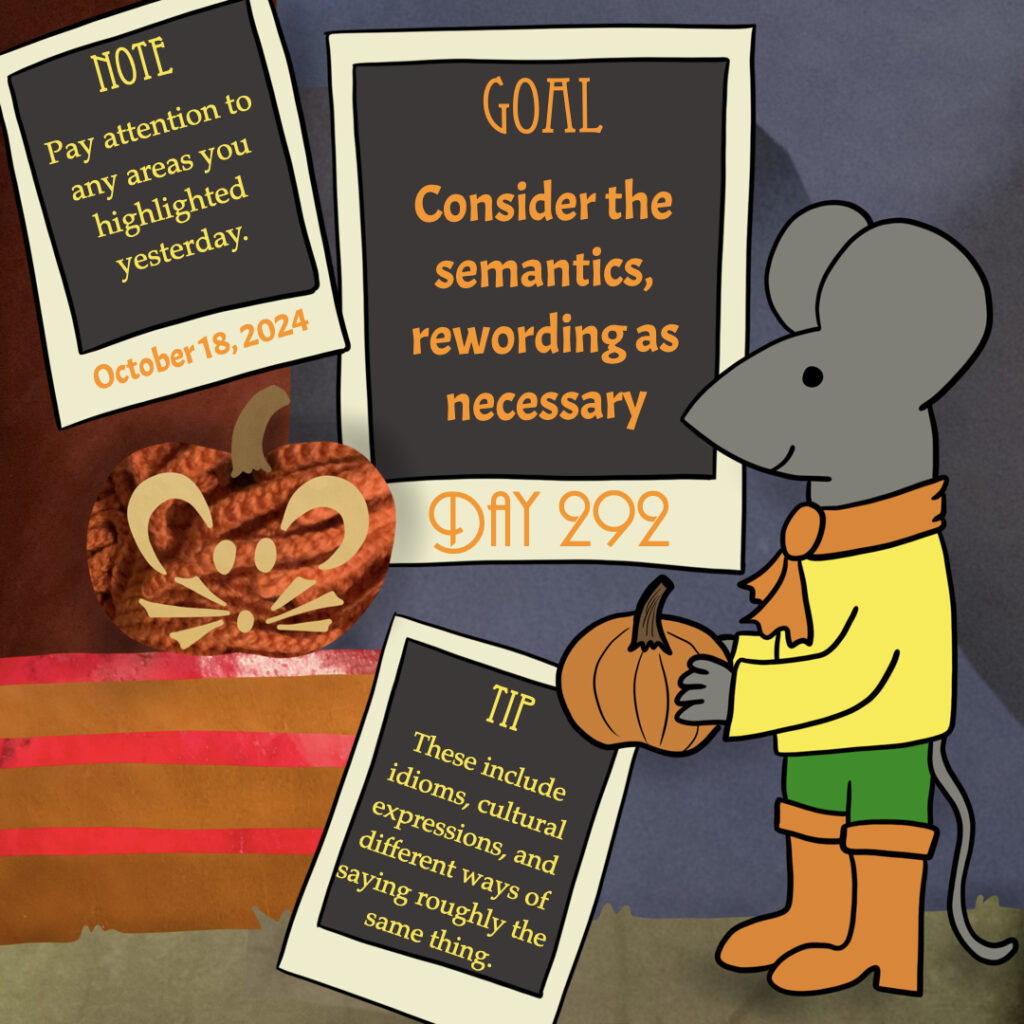
Goal: Consider the semantics, rewording as necessary
Note: Pay attention to any areas you highlighted yesterday.
Tip: These include idioms, cultural expressions, and different ways of saying roughly the same thing.
Work focus: Organize/Plan/Structure
Go back through your text carefully, considering the semantics of and constructions used in the clauses and paying close attention to any areas you highlighted yesterday.
Your text may have idiomatic expressions (e.g. “hit the hay”) or metaphorical extensions (e.g. “spend time,” which treats time as a resource that can be used or saved) that wouldn’t translate directly into your language. If so, consider how to best reword them so they convey the same intended meaning but fit with your language and its speakers.
Your text may also have some grammaticalized forms that wouldn’t exist in other languages. For instance, I can say “We set out for the park.” It would be odd for another language not related to English to translate such a sentence using the verb “set” and the adverb/particle “out” in this particular situation. You need to consider how your language would word such constructions (e.g. “we started to walk to the park” or “we began-moving toward the park,” where your language has a derivation to mark the initiation of an action).
You may not find everything on this pass, and that’s okay! Just spend time rethinking the words used and rethinking how your language might frame the intended meanings.
